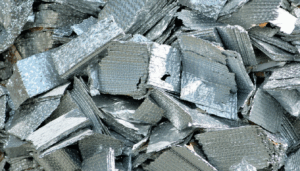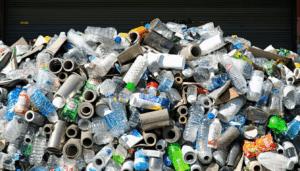In a significant shift for America’s environmental landscape, a new comprehensive recycling process is revolutionizing how municipalities and corporations handle waste management across the United States. The system, which integrates advanced sorting technologies with sustainable processing methods, promises to dramatically increase recycling rates while reducing landfill dependency. Industry experts believe this development could mark a turning point in the nation’s approach to waste management, addressing long-standing environmental concerns while creating economic opportunities.
Breakthrough Technology Drives Recycling Innovation
The newly implemented comprehensive recycling process utilizes artificial intelligence and optical sorting technologies to achieve unprecedented accuracy in waste separation. Unlike traditional recycling systems that typically recover only 30-40% of recyclable materials, this advanced process can identify and sort up to 90% of recyclables from mixed waste streams.
“This represents the most significant advancement in recycling technology we’ve seen in decades,” said Eleanor Martinez, Director of the National Recycling Coalition. “The precision of these new systems means we’re finally able to process materials that were previously considered too contaminated or complex for recycling.”
The technology employs high-resolution cameras and machine learning algorithms to identify different types of plastics, metals, and paper products, even when they’re soiled or mixed together. Robotic sorting arms then separate these materials with minimal human intervention, dramatically increasing efficiency while reducing operational costs.
Economic and Environmental Impact Across States
The implementation of comprehensive recycling processes is already showing measurable benefits in pilot cities. In Portland, Oregon, where the system was first deployed six months ago, landfill diversion rates have increased by 45%, while recycling processing costs have decreased by 28%.
Similar programs are now being rolled out in Atlanta, Denver, and Chicago, with federal funding supporting the transition. The Environmental Protection Agency estimates that nationwide implementation could create over 200,000 green jobs while reducing greenhouse gas emissions by the equivalent of removing 5 million cars from the road annually.
“We’re seeing a triple win scenario,” explained Dr. James Wilson, environmental economist at MIT. “These systems reduce environmental impact, create meaningful employment opportunities, and ultimately save municipalities money through reduced landfill fees and the sale of higher-quality recycled materials.”
Industry Adaptation and Consumer Education
Major corporations are quickly adapting to the new recycling landscape. Companies including Procter & Gamble, Coca-Cola, and Amazon have announced packaging redesigns specifically engineered to be more compatible with the comprehensive recycling process.
Consumer education remains a critical component of successful implementation. The Recycling Partnership has launched a nationwide campaign to help Americans understand how the new system works and what it means for their household recycling habits.
“The technology is remarkable, but its success ultimately depends on public participation,” noted Sarah Johnson, waste management coordinator for the city of Denver. “We’re investing heavily in education to ensure residents understand that more items can now be recycled, and how to prepare them properly.”
Looking Ahead: Challenges and Opportunities
Despite promising early results, experts acknowledge that challenges remain. Rural communities with limited resources may struggle to implement the technology without significant federal support. Additionally, certain complex materials still pose recycling difficulties even with advanced sorting capabilities.
Industry leaders are actively addressing these challenges through ongoing research and development. A consortium of universities and private companies recently received a $50 million grant to develop next-generation recycling solutions for currently problematic materials like multi-layer packaging and certain composite plastics.
“The comprehensive recycling process we’re seeing today is just the beginning,” said Martinez. “Within five years, we expect to see systems capable of handling virtually any consumer waste product, bringing us much closer to a true circular economy.”
FAQ: Comprehensive Recycling Process
What makes this recycling process different from traditional methods?
The comprehensive recycling process uses AI and optical sorting technologies to identify and separate recyclables with up to 90% accuracy, compared to 30-40% with traditional methods. It can process materials previously considered too contaminated for recycling.
How will this affect my household recycling?
More items will be recyclable, potentially simplifying home sorting. However, specific guidelines vary by location, so check with your local waste management authority for details.
Will this make recycling more expensive?
While implementation requires initial investment, cities report overall cost savings due to reduced landfill fees and increased revenue from higher-quality recycled materials.
When will this technology be available nationwide?
Major cities are implementing the technology now, with nationwide rollout expected over the next 3-5 years, depending on federal and state funding allocations.




